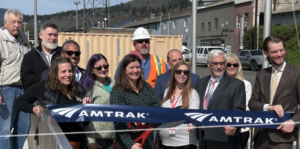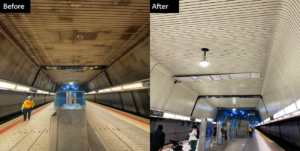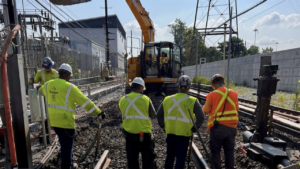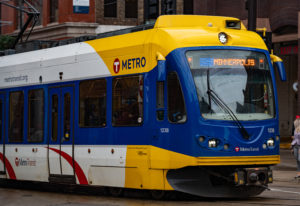Rail Summit succeeds again in Chicago
Written by Jenifer Nunez, assistant editorThe annual Rail Summit, held in Chicago, Ill., at the Union League Club of Chicago, was well attended by transportation executives and decision makers discussing this year's theme of the supply chain including railroads, waterways and trucking.
Founder of The Rail Summit Mary Elisabeth Pitz says the 2015 Summit was an enormous success on all accounts and although attendance was limited to 300, they are considering expanding attendance for June 2016.
“The Rail Summit Supply Chain ‘Making Money With Rail Linking Railroads, Intermodals, Trucks, Barges, Ports’ focused on delivering cutting edge, relevant information so that participants were armed with practical knowledge that could help them make more effective decisions for the profitable future of their companies,” explained Pitz. “As a breakfast keynote speaker, Larry Burns addressed the impact of driverless vehicles on freight, which is a new reality significantly changing how the supply chain will operate and opening new oppportunities for rail. As a luncheon keynote speaker, John Vickerman described the potential of the dramatic increase in freight resulting from the imports and the importance of the project to straighted the lower end of the Mississippi River creating an enormous new port. This dynamic project is supported and financed by the nation’s leading environmentalist foundations (Wal-Mart, Rockefeller Foundation) Louisana governmental bodies, and business.”
At the event, Linda Bauer Darr, president of the American Short Line and Regional Railroad Association (ASLRRA), pushed the awareness of the 45 G Short Line Railroad Tax Credit, which leverages private sector investment in rail infrastructure by providing a tax credit of 50 cents for every dollar spent on track improvements. She also pointed out the importance of the Shortline Safety Institute, which is the direct result of a proposal the ASLRRA presented to Transportation Secretary Anthony Foxx in January 2014, as a step toward improving the safety culture for short lines transporting crude-by-rail shipments and eventually for all shortline and regional railroads.
Additionally, Bauer Darr reminded the audience about Railroad Day on Capitol Hill, which will be held June 4, 2015 in Washington, D.C. She noted that the event is the single most effective way to reach decision makers in the capitol and that every voice is important and needed to get the message to Congress the importance of rail in today’s economy.
Another keynote speaker, President and Chief Executive Officer of Patriot Rail Company John Fenton, spoke passionately about safety in the industry. He said simply: “Safety is managing risk in the workplace.” Fenton noted that the industry cannot have complacency in railroad safety and there needs to be continuous improvement. He noted that when asked if a railroad has good safety culture, the answer should never be “yes,” because railroads and suppliers should constantly be striving for better and more effective safety practices.
The event was filled with many breakout sessions, including an engineering-specific presentation from Georgetown Rail Equipment Company entitled “Monitoring Infrastructure to Promote Efficient Rail Operations,” where Gregory Grissom, PE, vice president of engineering and Walter Blesser, director rail asset management, offered up solutions to increased axle loads, volatile freight, increased timetable speeds and shared freight/passenger high-speed rail corridors. Blesser and Grissom spoke of advancements in sensor technologies, power requirements, cellular communication and data processing algorithms.





